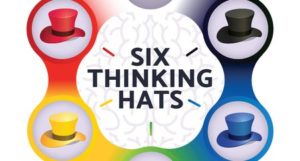 Several years ago while visiting with my dad, I heard a recitation by radio broadcaster Paul Harvey. My dad was a big Paul Harvey fan, and thus I heard a lot of Paul Harvey recitations.
Several years ago while visiting with my dad, I heard a recitation by radio broadcaster Paul Harvey. My dad was a big Paul Harvey fan, and thus I heard a lot of Paul Harvey recitations.
This particular recitation was at Christmas time. It was about a farmer who was trying to get a bunch of birds out of the snow and cold into a nice warm barn. The farmer thought to himself, “If only I could think like a bird, I could help them understand where to go for warmth and shelter.”
Often we are like the farmer as we sit in a meeting, trying to get our coworkers to understand our point of view. It can be very difficult, especially in trying to be creative while problem-solving.
To help address this issue, particularly in developing solutions for Continuous Improvement programs, one can use a system designed by Edward de Bono, which he referred to as the “Six Thinking Hats.”
Using this technique, team members are coached to consider ideas the way that other team members may see them.
The six hats — managing, information, emotions, discernment, optimistic response and creativity — can be used to help direct one’s point of view. For instance, an engineer that normally will use logic when approaching an issue may be asked to put on an emotions hat, thinking more intuitively and instinctively. Or someone who is deeply devoted to information, considering only the facts, may be asked to wear the creativity hat, thinking beyond just data.
In each case, the team member is really looking at the same issue, but in a different manner than they normally would. By evaluating an issue or problem from a different point of view, team members can gain insights into their own thought processes and those of others and be able to expand upon potential ideas for solutions.
While this is not a technique to be used for all phases of a project, it is quite commonly used in developing improvement strategies.
How do you help the farmers on your team understand the point of view of other team members? Give six thinking hats a try. You might be surprised at the results.
How are you helping your employees to work smarter by reducing the amount of time they spend on non-productive activities and correcting errors? If your business processes need a “check-up,” please email me at michael@leadingchangeforgood.com! I’d love to help you get back to a healthy, productive workplace.




Recent Comments